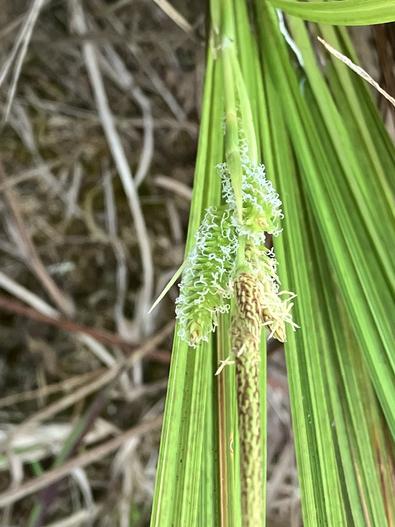Lesser Tussock-Sedge
(Carex dianae)
Lesser Tussock-Sedge (Carex dianae)
/
/

monkeyjodey
CC0 1.0
Image By:
monkeyjodey
Recorded By:
Copyright:
CC0 1.0
Copyright Notice:
Photo by: monkeyjodey | License Type: CC0 1.0 | License URL: http://creativecommons.org/publicdomain/zero/1.0/ | Occurence ID: https://www.gbif.org/occurrence/4976397392 | Publisher: Inaturalist |



Estimated Native Range
Summary
Carex dianae, commonly known as Lesser Tussock-Sedge, is an evergreen perennial grass native to the cloud forests and moist upland areas of St. Helena. It typically grows to a height of 0.3-0.9 feet (0.09-0.3 meters) and can spread to about 3 feet (0.9 meters) wide. Lesser Tussock-Sedge forms dense clumps of fine-textured, dark green foliage that can provide a lush groundcover in suitable environments.
Lesser Tussock-Sedge is valued for its ability to thrive in damp, shaded conditions where other plants might struggle. It is often used in garden settings for mass plantings, as a ground cover in shaded areas, or along the edges of water features. It requires consistent moisture and does best in soils with medium drainage. While it prefers part shade, it can tolerate a range of light conditions from full shade to filtered sunlight. This sedge is relatively low-maintenance but may need occasional division to manage its spread and maintain vigor. It is not known to have significant disease or pest issues, making it a reliable choice for gardeners seeking a resilient plant for challenging areas.CC BY-SA 4.0
Lesser Tussock-Sedge is valued for its ability to thrive in damp, shaded conditions where other plants might struggle. It is often used in garden settings for mass plantings, as a ground cover in shaded areas, or along the edges of water features. It requires consistent moisture and does best in soils with medium drainage. While it prefers part shade, it can tolerate a range of light conditions from full shade to filtered sunlight. This sedge is relatively low-maintenance but may need occasional division to manage its spread and maintain vigor. It is not known to have significant disease or pest issues, making it a reliable choice for gardeners seeking a resilient plant for challenging areas.CC BY-SA 4.0
Plant Description
- Plant Type: Grass
- Height: 0.3-0.9 feet
- Width: 1-3 feet
- Growth Rate: Moderate
- Flower Color: N/A
- Flowering Season: Spring, Summer
- Leaf Retention: Evergreen
Growth Requirements
- Sun: Part Shade
- Water: Medium
- Drainage: Medium
Common Uses
Bird Garden, Deer Resistant, Low Maintenance
Natural Habitat
Cloud forests and moist upland areas of St. Helena
Other Names
Common Names: Lesser Panicled Sedge, Longstalk Sedge
Scientific Names: , Carex dianae,
GBIF Accepted Name: Carex dianae Steud.